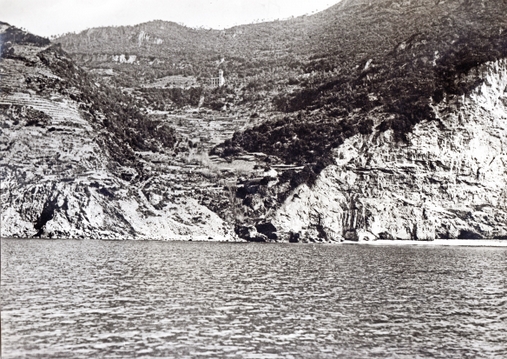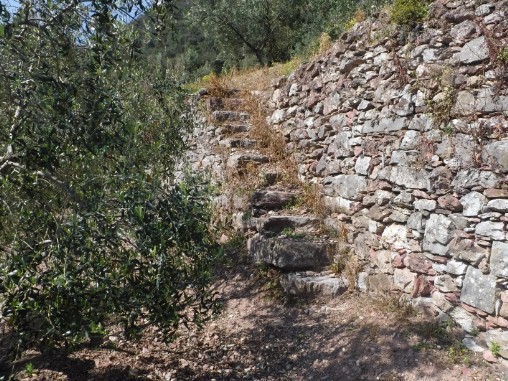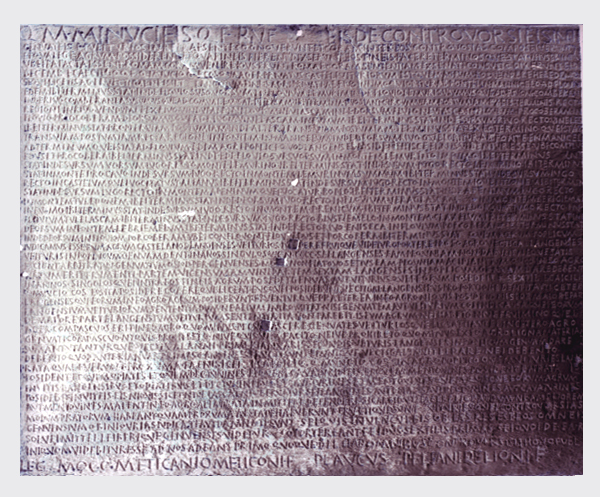HISTORY
ENGLISH > THE FIRM


Liguria is like a crescent set on the sea. The luminous Tyrrhenian blooms its shores, the Alps and the Apennines - which stay close to it - protect it from winds and invasions. This long, narrow, arched strip of earth, green of palms and olive trees, with colorful houses, scented of flowers, oranges, jasmine and salty, where the most tasty fruits ripen, where the vineyards on the rocks climb between pines and cypresses, where soft hills alternate with rough and steep riviere, is only apparently a continental region contiguous to Piedmont, Lombardy, Emilia and Tuscany: indeed it is an island. (A. Morassi, Through Italy -T.C.I.- Milan 1949).
The first references to viticulture in Liguria are from the contacts with the Greeks, and even more with the Romans: the first, landed along the shores of the Tyrrhenian sea, taught the natives this cultivation by transmitting them also the techniques, the latter improving the quality of production. The oldest document of this period in Liguria dates back to 117 BC. It is a bronze slab found in Val Polcevera in 1506, which shows the outcome of a controversy about borders where the wine of Val Polcevera in this case assumes value for payment.

Moreover there are several citations, from Strabo to Pliny the Elder, and if for the first Ligurian wines were produced in limited, rough and resinous quantities, the latter made the praises in his Naturalis Historia, stating that "Etruriae palmam Luna habet ".
The Ligurian people immediately got loving the vine and the olive and over time they shaped the territory to host these crops, creating the terraces held by the dry walls, where they settled well, favored by the mild climate, protected by the mountains and well ventilated by marine breezes. At the end of the eleventh century (the era of the Communes), the development of commercial relationships stimulates the agricultural production (also viticulture) of the area. In the Middle Ages, under the demographic push, olive, vineyards and vegetables were grown even on the most impervious soils shaping them as terraces supported by dry stone walls. The vine and the olive become an integral part of the region's economy and follow its historical phases. It is a long time of luck and success for Ligurian wines: Francesco Petrarca commended the praises of Cinque Terret wines“....così famosi per i dolci pampini che i colli di Falerno e la lodata Meroe si dichiarano inferiori”. Ships sailing from the port of the great maritime republic of Genoa carry goods of all kinds, including wines, which we find widely documented in notarial acts that certify trades.
The decline in trade, due to the weakening of Genoa, led many peasants to convert part of the land to other crops, and the arrival of the phylloxera and the mildew at the end of the nineteenth century affected heavily the sector, leading it to decline. In the second half of the last century and more precisely since the seventies there began to be a slow, but continuous, counter-tendency, even though until the 1980s, the abandonment of the territory continued with the direct consequence of the reduction of the surface area and production: young people migrate to the cities, leaving farming activities predominantly in the hands of the elderly population. Often, wine production does not exceed the scope of family consumption.
In the last fifty years, the tenacity of some producers and the strong links between man and land, foster the cultivation of local vines.
The arrival of DOC certifications, first of all in 1973 the one CINQUE TERRE and CINQUETERRE SCIACCHETRA 'as well as the continuous research of quality over the quantity, increased the number of companies, albeit small in size: many young people have embarked on this road as a choice of life, bringing renewal and energy to the whole sector, well aware that, as of today, agriculture also means conservation of the land as a cultural and environmental heritage.
The farm is located at the eastern end of NATIONAL PARK OF CINQUETERRE, near the village of Campiglia. It extends over an area of over 2.5 hectares, grown in vineyards and olive groves within a larger property (the valley of Albana) belonging to the same familiy for four generations. It is the only producer of SCIACCHETRA 'and WHITE WINE CINQUETERRE D.O.C. in the municipality of La Spezia.